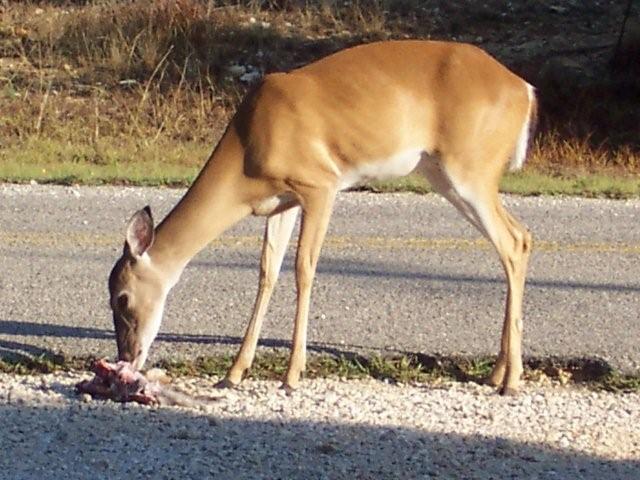Whitetail Doe Eats Fawn?!?
White-tailed deer have specific nutritional requirements that can be met through habitat management and by maintaining deer numbers at the carrying capacity for the area. Under these described conditions, deer can get all of the required components of their diet, including energy, protein, fat, vitamins, and minerals, that allow them to function properly. Many deer managers will even provide supplemental forage in the form of protein pellets or food plots that allow for optimal deer performance and health.
But what happens when a deer’s diet does not meet their dietary requirements? The answer is simple: Deer suffer. This suffering comes in the form of lower body weights, poor body function, lowered immune systems, and sub-optimal antler growth. As far as deer are concerned, the latter is the least of their worries.
Malnourished bucks will “steal” necessary vitamins and minerals from antler growth to supply critical processes. Does will do the same sort of thing, but malnourished does will abort their fetuses during pregnancy or abandon their fawns during nursing. In short, deer that have poor diets will do things you may not expect. Such is the case in these photos of a white-tailed doe eating a road-killed fawn.
These photos are from an suburban area with a high population of white-tailed deer located near Austin, Texas. And by high, I suspect that the deer density in this area is approaching about 1 deer for every 1 to 2 acres. I don’t care where you go, that’s a very high deer density! To make matters worse, this part of Texas has been under severe drought conditions for the past year. Although high numbers of deer exist in suburban areas throughout the United States, poor environmental conditions can exacerbate the problems associated with deer overpopulation.
One deer for every one acre: I hope that no ranch ever attempts to have this many deer on a property. In most parts of the country, a good rule of thumb is 1 white-tailed deer for every 6 to 12 acres of deer habitat, depending on soil and precipitation. In central Texas, a deer would require a minimum of 8 acres of good habitat to meet its dietary requirements and achieve optimal growth. Because the doe above is found in a suburban area where deer numbers are difficult to maintain (because hunting is not allowed), the the animal can not possibly have a proper diet. The “habitat” is inadequate and, as a result, so are the food sources.
Over the years, researchers and observers have reported that white-tailed deer are not strictly vegetarian. In areas where their normal diet is low in essential minerals (particularly calcium) deer have been reported to eat meat, in addition to bird eggs and young birds (whole) found in nests. These unusual additions to the diet are believed to be consumed when minerals are lacking, although actual vitamin requirements in whitetail are unknown, as well.
Obviously, the whitetail doe featured in these photos is not in horrible shape, but she is far from great condition. This doe was reportedly observed eating meat directly from the road-killed fawn. Although meat does not normally comprise the food habits of whitetail, this doe sensed that something she was lacking could be garnered from the flesh of this dead fawn.






